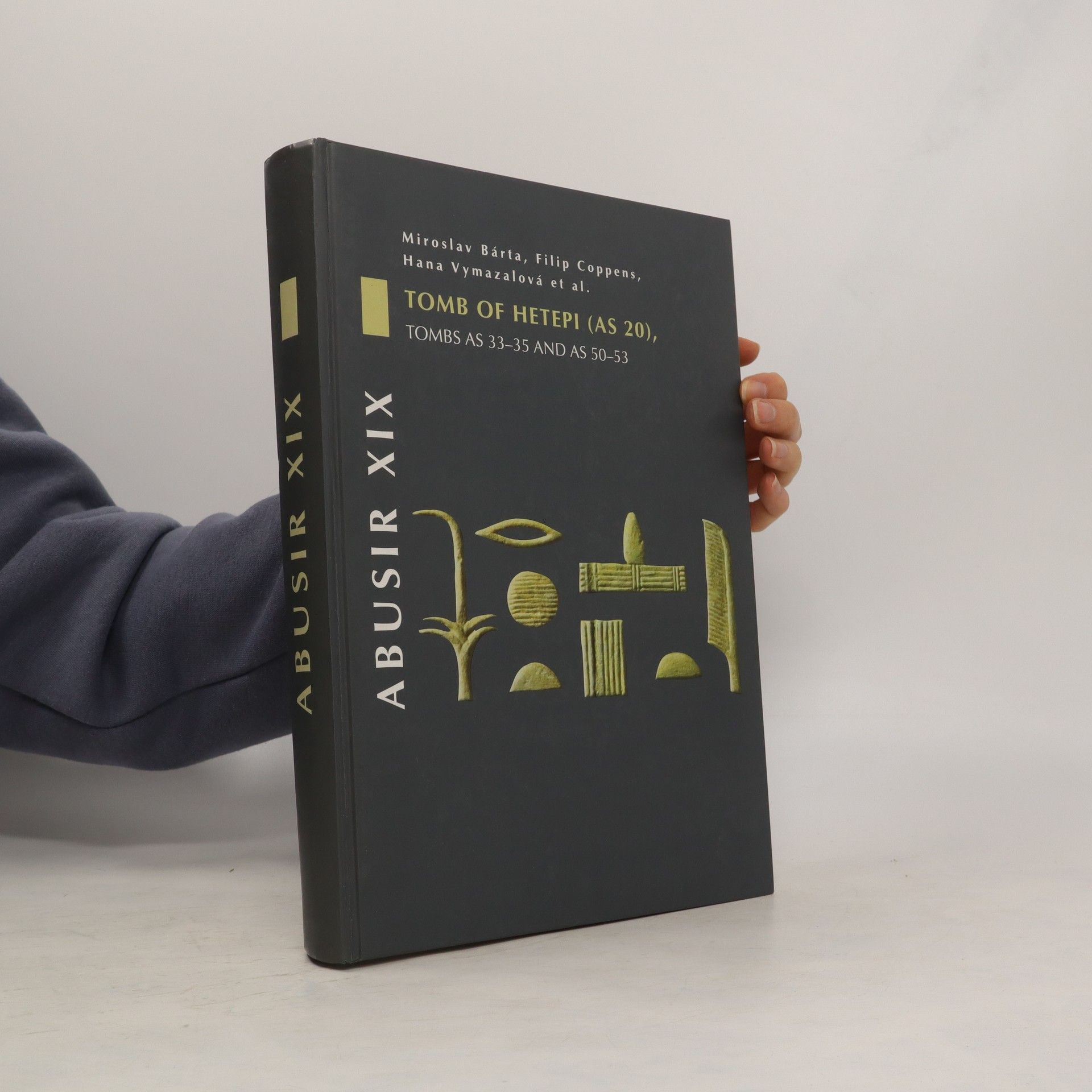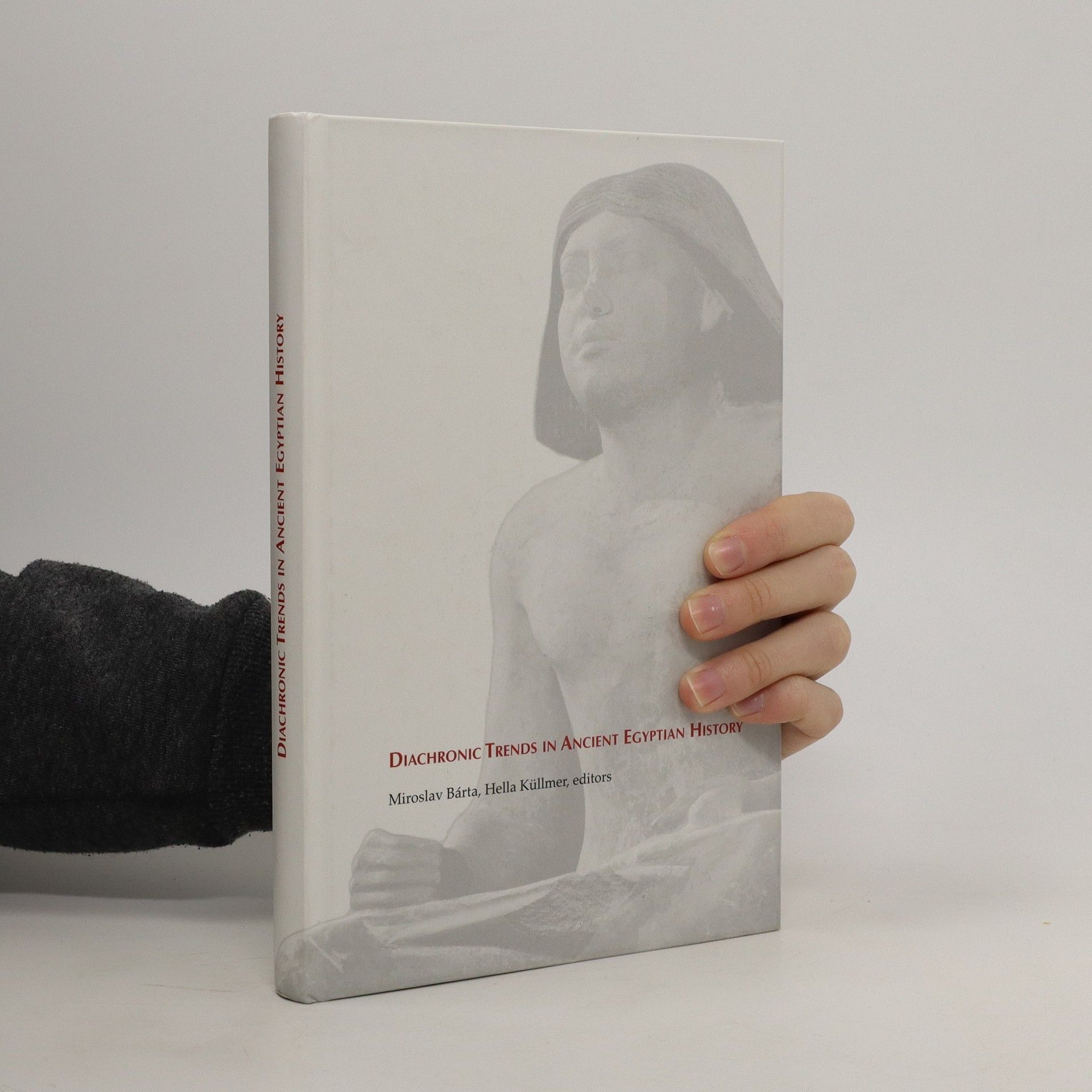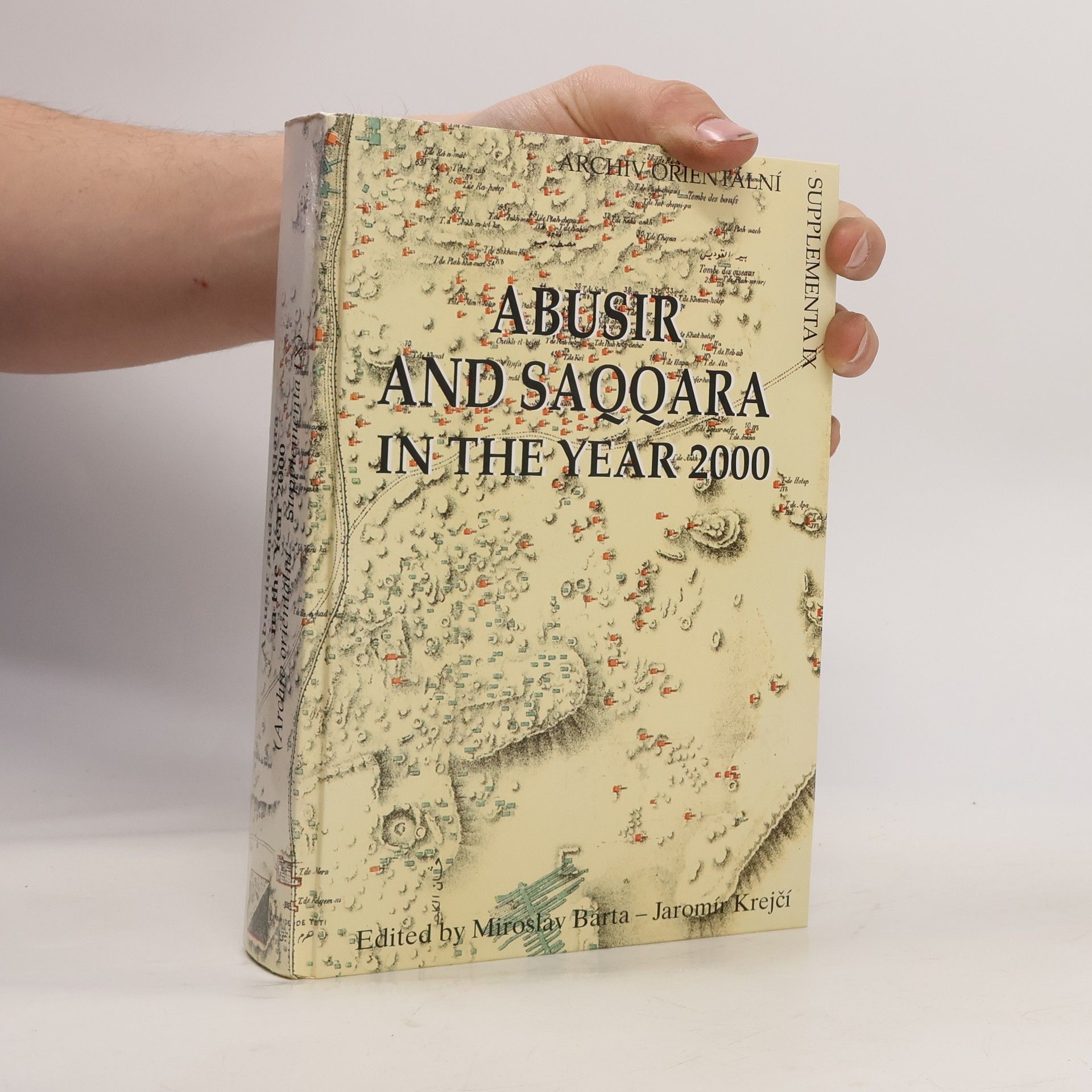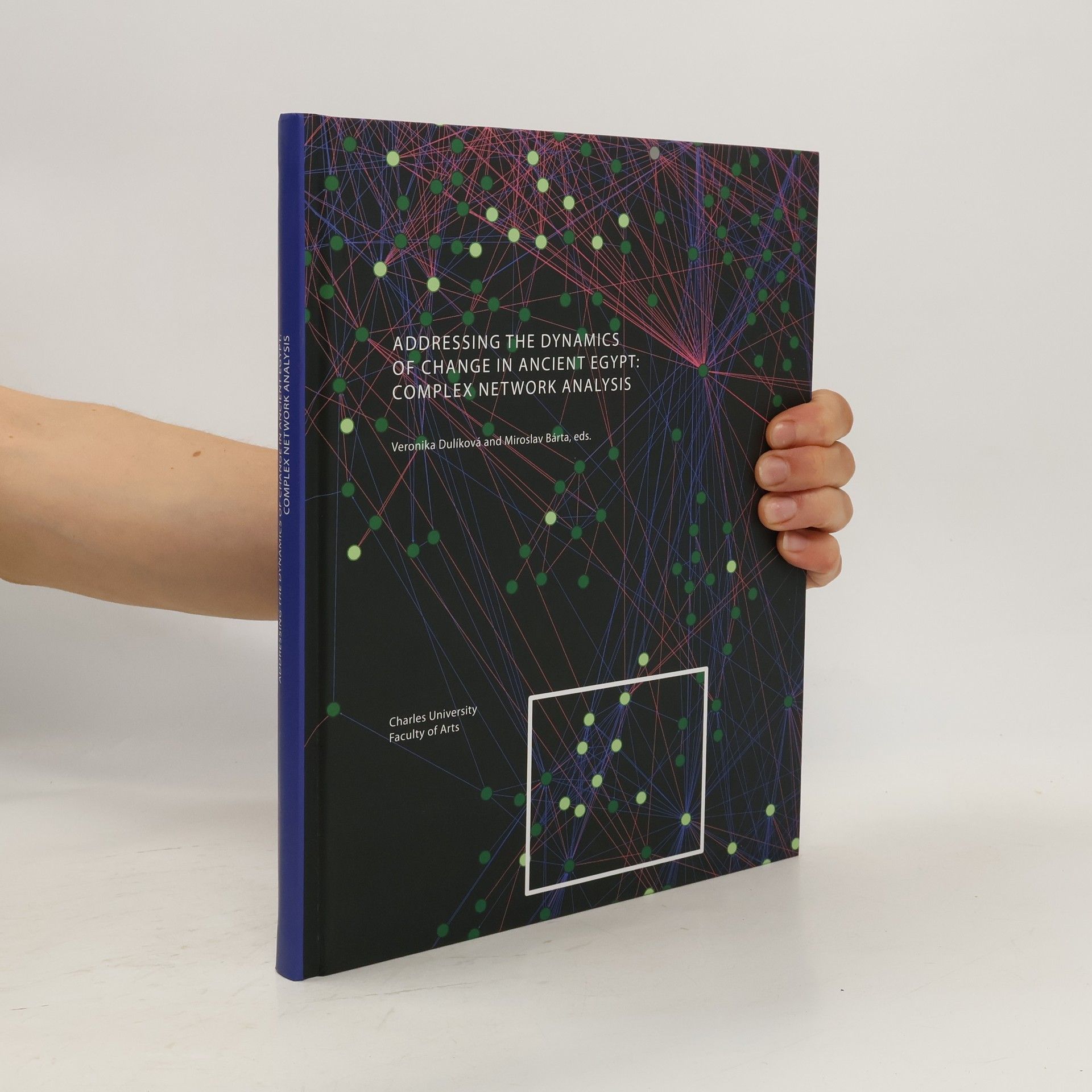Addressing the Dynamics of Change in Ancient Egypt. Complex Network Analysis
- 200 pages
- 7 hours of reading
An investigation into prominent officials across different periods in ancient Egypt.
Miroslav Bárta is a leading Czech Egyptologist and archaeologist whose research focuses on ancient civilizations of the 3rd and 2nd millennia BC. He intensely studies the relationship between humans and landscape in the ancient world, the rise and fall of complex societies, and the archaeological context of the Old Testament. His fieldwork in Egypt and Sudan uncovers fascinating historical details of these regions. Bárta is also recognized for his interdisciplinary approach and extensive mapping of pyramid fields.






An investigation into prominent officials across different periods in ancient Egypt.
This collection of articles provides an overview, on the occasion of the Millennium, of Czech work at the Egyptian cemeteries of Abusir and Saqqara over the last 50 years. The contributions are grouped by period and range from studies of Early Dynastic sarcophagi to Coptic pottery.
This publication is the latest monographic outcome of a long-term project of survey and research of the archaeological site of Abusir, focusing on a particular set of cemeteries located at Abusir South. The present volume of the Abusir series concentrates on the mastaba of Neferinpu (AS 37). It aims to present primary data and their basic analysis and interpretation acquired during the tomb examination by the Czech Institute of Egyptology during two subsequent seasons of 2006 and 2007 and followed by some minor campaigns in 2012 and 2013 and a specific analytical campaign in September 2014 carried out by the Japanese team from Tokyo University of Science. The mastaba was built by a sun priest and official Neferinpu who reached the peak of his career during the reign of Nyuserra and Djedkara
The book includes contributions of the following authors: Hartwig Altenmüller, Ladislav Bares, Miroslav Bárta, Andreas Effland, Martin Fitzenreiter, Hans Goedicke, Peter Jánosi, Dieter Kurth, Christian Loeben, Juan Carlos Moreno García, Jana Mynářová, Anthony Spalinger, Miroslav Verner, Hana Vymazalová, Wolfgang Waitkus.
The legendary figure of Sinuhe, an Egyptian administrator who fled Egypt upon the assassination of the king later to return without reprisals, is preserved in the Tales of Sinhue found on a number of papyri and ostraca. This study not only includes a translation of the Tale, with commentary, but goes further to explore the historical and political context in which it was written in Middle Kingdom Egypt. Arguing that there is no evidence to suggest that Sinuhe was ever a real historical figure, Barta presents evidence for Sinuhe being a fictitious character, a piece of political propaganda set in an idealised society. Beyond the Tale itself, Barta examines a wide range of Egyptian docuemnts and archaeological evidence from Egypt and the Southern Levant from the early 2nd millennium BC.
The tombs published in this volume of the Abusir series have been excavated during several seasons at Abusir South. The eight tombs are located in the easternmost sector of Abusir South, on the slopes (tombs AS 20 and AS 33) and at the bottom (tombs AS 34-35, 50-53) of a large but low hill, to the north of the so-called Wadi Abusiri. They do not form a single cemetery; rather, they represent different groups of sacral structures that illustrate very well the diachronic development of the Abusir South necropolis during the Old Kingdom (for earlier monographs covering previous excavations see Abusir V and XIII ) and the Late Period-Ptolemaic era. Most if not all of the structures document in a new way important archaeological and historical themes, such as the origin and development of the false door tradition; early administration (tomb AS 20); unique building development of early Old Kingdom tombs (AS 20 and 33); the late Old Kingdom sociology of family cemeteries (tombs AS 34-35 and 50-53) and the appearance of new Late Period animal cemeteries (tombs AS 33, 34-35 and 50-53). Miroslav Bárta is professor of Egyptology and director of the Czech mission to Abusir. Filip Coppens and Hana Vymazalová are researchers in the Czech Institute of Egyptology, Faculty of Arts, Charles University in Prague. All the authors are members of the Czech Institute of Egyptology, excavating for many years in Egypt.
The current volume is the first of the three planned publications dedicated to the complex of the vizier Qar and his sons, dating to the Sixth Dynasty, reign of Teti - Pepy II.
The Czech Institute of Egyptology of the Charles University in Prague has since the start of the third millennium established the tradition of organizing on a regular basis a platform for scholars, active in the pyramid fields and the cemeteries of the Memphite region (Abusir, Saqqara, Dahshur and Giza in particular), to meet, exchange information and establish further cooperation. The present volume, containing 43 contributions by 53 scholars, is the result of the already fourth "Abusir and Saqqara" conference held in June 2015. The volume reflects the widespread, often multidisciplinary interest of many researchers into a wide variety of different topics related to the Memphite necropoleis. Recurring topics of the studies include a focus on archaeology, the theory of artifacts, iconographic and art historian studies, and the research of largely unpublished archival materials. An overwhelming number of contributions (31) is dedicated to various aspects of Old Kingdom archaeology and most present specific aspects linked with archaeological excavations, both past and present.
The present volume is dedicated to the concept of collapse as reflected through different kinds of historical and environmental evidence. A total of twenty-eight in-depth studies provides a heterogenous analyses of the collapse and regeneration processes in societies and civilisations separated in space in time. The individual chapters vary in their locations, characteristics and age. They contribute invaluable observations, both general and specific, concerning the fluctuation of complexity within human history and its consequences for respective societies developing in different contexts – focusing on their inner processes or their ability (or failure) to adapt to environmental dynamics. The outcome may be surprising to some readers as most contributions clearly demonstrate many universal features that connect mankind regardless of its variables such as attained technological stage, degree of complexity or external factors such as climate change. It is hoped that the present book may serve not only as a textbook about our common past but also as a source of inspiration for how we view the world and its possible futures.
In 2019 Charles University, its Faculty of Arts, and the Czech Institute of Egyptology are celebrating the hundredth birthday of Czech Egyptology. It is an important centenary not only for us, but for archaeology globally. For many years now Czech Egyptologists have been among world leaders in the field, making major breakthroughs (most recently the discovery of the tomb of the priest Kaires) - and helping to set new international research trends. This book presents the most important discoveries of Czech Egyptologists and the range and variety of their activities.